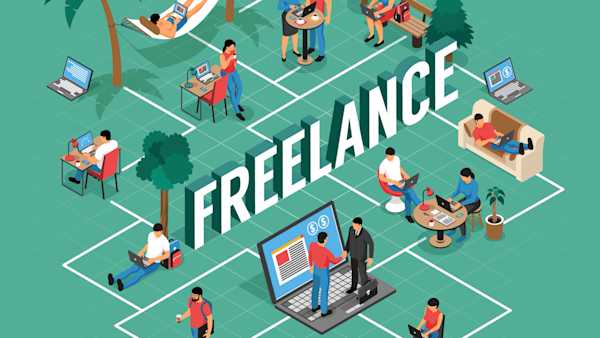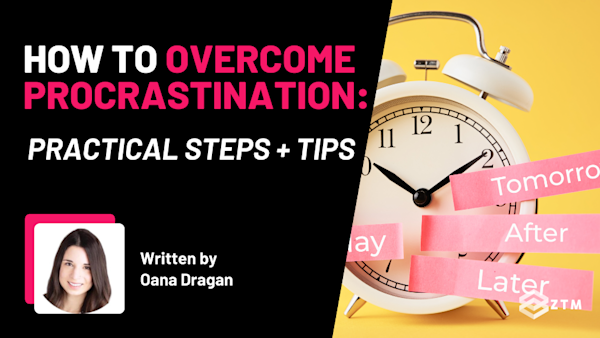Freelancing is awesome. You can work less, make more money, and do it from anywhere in the world. However, there’s also a lot of small things that you need to learn to get it running smoothly.
Which is why, in this guide, I’m going to share my top tips for freelancing after working as a consultant for the last 11 years. What to do, common problems to avoid, and more.
So let’s get into it.
Sidenote: Want to get started in freelancing and consulting and want to fast-track your results? Check out these courses:
With that out of the way, let's get into this guide.
These are the 6 main things I wish someone had told me before I started...
Tip #1. Specialize early and build a portfolio that proves it
It seems counterintuitive, but the sooner you niche down, the easier it is to make sales and charge more.
Why?
Simply because your clients don’t look for generalists, instead, they’re looking for the ideal person who can solve their particular issue.
For example
Being a web developer in general and offering to build websites is a great skill to have. However, if you say that you specialize in a particular type of site like Shopify, you’ll suddenly stand out as the best option for people who want that site built. (Even though the methods are almost identical).
Yes, you’ll have less of a market to talk to, but you’ll be more appealing to those who want what you offer. They’ll also pay more for the ideal person.
Check out this site below. They’re an agency that works exclusively on Shopify:
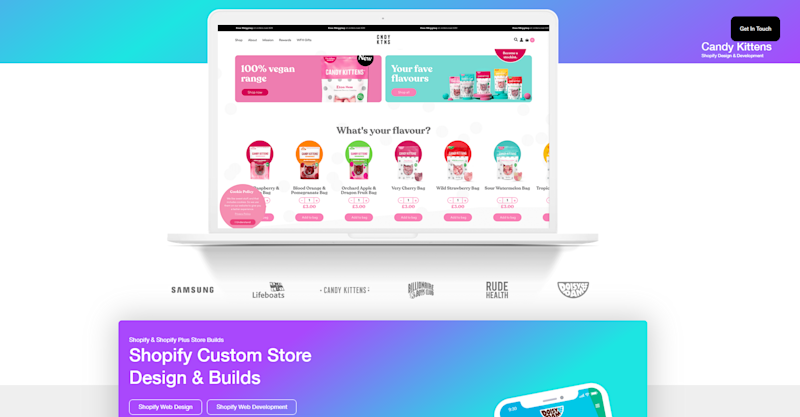
They started as a 1-person freelancer who built up to an agency over time, all from specializing.
It's not just them, though. I also have a friend who did this and 10x’d their sales and their price per build from niching down. A lot of people freak out when they hear about niching down, but honestly, it's often the fastest way to differentiate and make sales.
To be clear, you’re not stuck here either. You can still do other work behind the scenes, but your messaging should make it obvious who you help and why you’re the right fit.
If we look at that agency again, they even offer an ongoing retainer fee to help with any issues, as well as additional services all tied into Shopify:
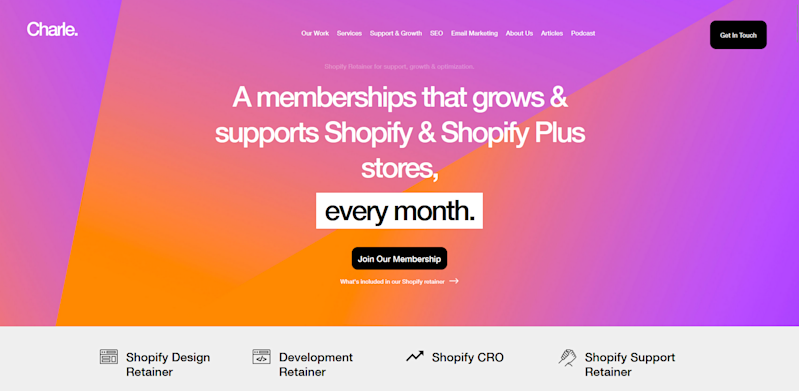
Smart right?
Finally, help people to see your specialisation by backing it up with proof and building a portfolio that shows results, and not just deliverables.
What do I mean by this?
Well, instead of listing tools or screenshots, walk people through the before-and-after.
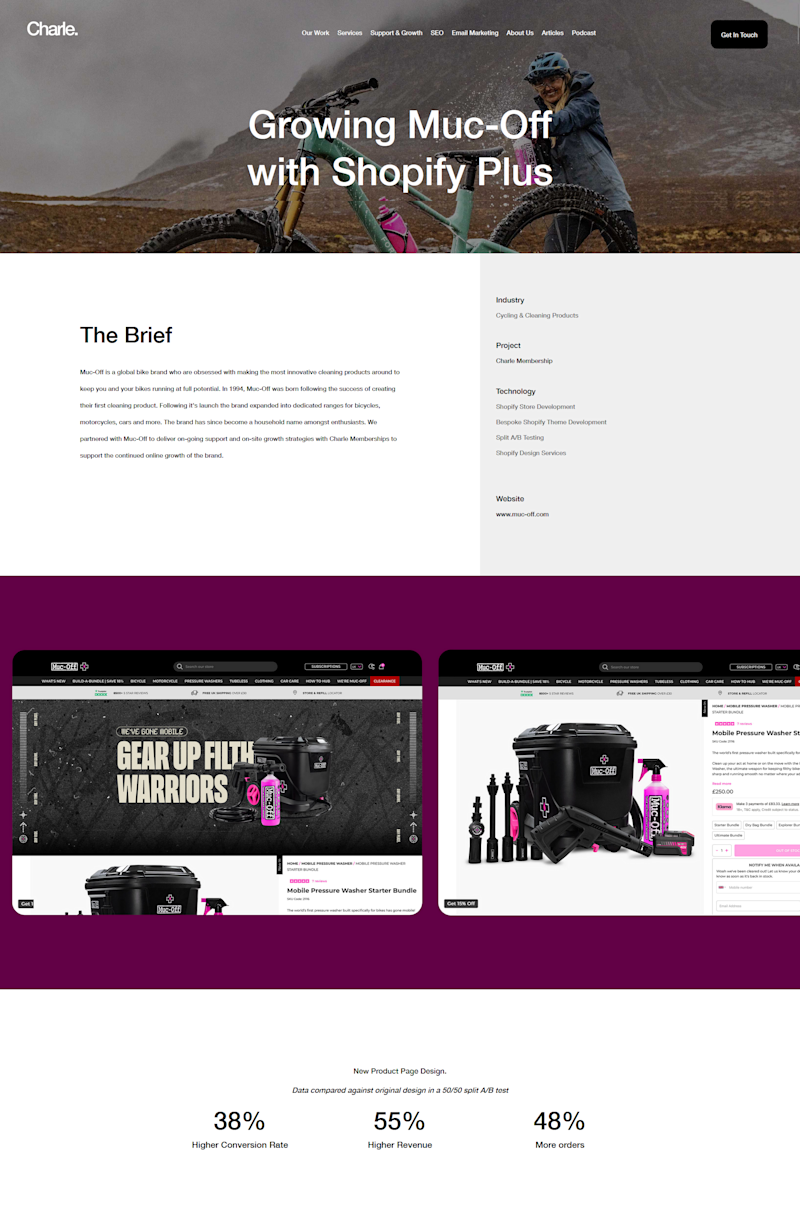
I cut the image off early so it wouldn’t be huge on the page, but you get the idea. You want to show the before and after because the story sells. So if you can show what you built for your clients, what it achieved, and how it solved the client’s problem, then you’ll close the deal even easier.
Tip #2. Build systems and templates to save time and scale your work
A major roadblock for most people when they start freelancing is trying to offer everything to everyone.
What I mean by this is that you want clients so you can get paid. This often leads to you saying yes to a lot of things. But the issue of course, is that it's not scalable. You have to figure out new things all the time, and start from scratch, which is exhausting.
But by niching down, you can then simplify a large part of this by doing similar things each time. You can also build out systems to make it easier.
For example
If you focused on Shopify builds and nothing else, then you could create site design templates that you reuse as the starting point for different clients. This would then cut down on a lot of the build time. (It would also help you set a specific cost for it).
It’s not just on the deliverable, either though. You can and should build systems to help you automate or simplify almost every repeatable task in your freelancing business.
Set up templates, systems, and automations for:
Onboarding emails
Discovery calls
Designs
Deliverables
Etc
The more you standardize, the smoother your workflow becomes and the easier it gets. You’re also more consistent, hit deadlines faster, and clients feel like they’re in good hands. Plus, once your process is documented, it’s a lot easier to bring in help later if your workload grows.
This might feel like overkill at first, and I get it. You’re already doing the things and don’t have time to add more work in. However, the sooner you get this done, the more time you free up in the long run.
You have to wear a lot of hats as a freelancer. So the sooner you can make these easier to work with the better.
Speaking of all those hats…
Tip #3. Keep your pipeline full to make sales more consistently
So how do we get clients and customers as a freelancer?
Well, once you have everything up and running smoothly, you could outsource to a marketing company to bring new sales in. However, you’re probably not going to have the budget at first for this, so you’re going to have to be more proactive and market for yourself. (Hello marketing hat!).
So what can you do?
Well there’s a few things:
Having a professional website setup with a portfolio is obviously the first step. This helps people find you and see what you do
Share your new work online also. I recommend blogging on your own site about specific topics and then resharing these on Medium and other platforms so you get in front of your ideal audience
You can also reshare that content on LinkedIn and other platforms, and tell your email list so you can keep in touch with past clients
You can also list your services on large freelancing platforms. This way people can find you and you can piggy back off their size
Make more from past sales! Follow up with previous clients to see if they need new services. (You could also set up a reminder to just check in and see how they are - you’ll be surprised how many sales come through like this)
Reach back out to people who’ve shown interest before. A single check-in or post can turn into your next project or get a referral to someone else
Ask past clients for testimonials, especially if you got them on 3rd party platforms. This can help build up social proof
For example
If we look at that Shopify agency again, they not only have a blog, but they’ve also started a video podcast:
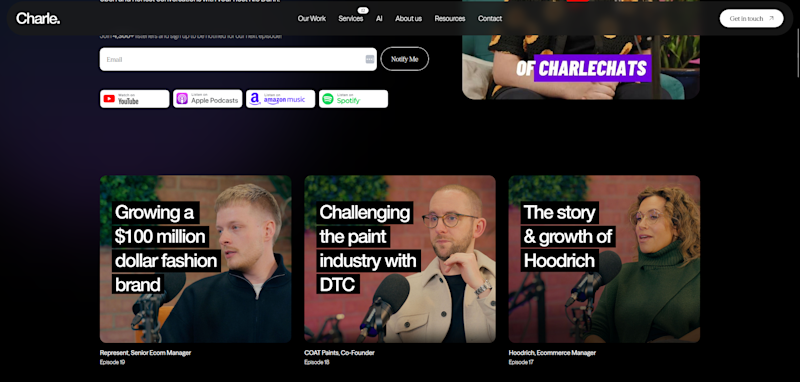
I’ll be honest though, you don’t need this to get started. You have to remember that they have a large team and systems in place, and it's easy to get stuck comparing yourself to others that are further ahead than you.
The trick is to do what you can now at your current level. You don’t need a complex sales funnel or fancy marketing strategy. You just need a repeatable habit of staying visible and top of mind.
The easiest way to avoid dry spells is to make lead generation part of your weekly routine. Don’t wait until you need clients to start working on your marketing. Consistency beats intensity here, and one hour a week of outreach or portfolio updates does more than panicking during a slow month ever will.
Tip #4. Price your services properly
Most freelancers undercharge when they start. Sometimes this is because of imposter syndrome, but often it comes down to not really knowing what the value of what you’re doing is worth, or what your costs are going to be.
So let’s break these down.
The key thing to understand is that freelancing isn’t about selling your time; it’s about selling value.
What do I mean? Well, the value of what you deliver to the client is often far higher than what you’d ever pay yourself for the same effort.
For example
A Shopify site that helps a client generate $30,000 a month in sales is easily worth a $3,000 build, even if it only takes you a few days to complete. That’s value-based pricing.
Sure, you could charge double what you got paid at your last job for the hours required, but I would still recommend charging more. Simply because the higher your price (as long as it’s backed by expertise and clarity), the more trust it builds.
This is because cheap can often signal risk or low quality. This is fine if what you want doesn’t have much value to you, and you’ll happily cut costs. But if it's your website that makes tens of thousands per month, then you don’t want cheap. You want confidence, and that comes from premium pricing. Clients want to know they’re in good hands,, and your pricing often speaks louder than your portfolio.
Tl;DR
You should always be charging more than you think is enough. Especially when you take into account all the hidden extra costs in freelancing such as needing to cover taxes, paid time off, software costs, as well as all the hours where you’re not actually doing client work such as admin hours.
Once you factor those in, you’ll realize your old employee rate won’t even cover the basics. This is why you need to do the math on your costs, also and use that to help base your rates.
For example
If you want to make $6,000 a month and can only realistically bill around 80 hours (after all that other admin and pipeline-filling work), then your base rate should be at least $75 an hour. That’s your minimum before taxes or profit margin.
So do the math and figure out what you need to charge. Then add in those systems I mentioned earlier so you can get more of the client work done faster, and all the other work can be automated or done more easily. This frees up more time and makes your effective hourly rate even higher.
The key though is not to just guess a price, and not to undercut. Set your rates based on outcomes and efficiency, not fear.
Tip #5. Communicate clearly and set boundaries to keep clients long term
One of the main issues when it comes to freelancing (especially consulting) is communication between you and the client. It can lead to scope creep, burnout, and unhappy clients.
So let’s break this down.
You don’t need to be a people pleaser to keep clients happy. You just need to be clear and consistent. So make sure from the first call, you clearly explain:
What’s included
What’s not
And how you handle changes
Also, be upfront about timelines and feedback rounds, and how you prefer to communicate. It might feel overly formal at first, but it saves you from awkward “I thought this was included” moments later.
Instead you tell them how to communicate, what channels, and when to expect replies.
This is so important! I can’t tell you how many times I got emails at 3am from international clients to put out fires, that were nothing to do with the service I offered - simply because I wanted to please them and had helped out in other areas.
Don’t become a general oddjob. Boundaries are what make your business sustainable. If you reply to emails at midnight, clients will expect midnight replies. If you give away extra work for free, they’ll assume that’s normal.
So set your standards early. Not because you’re difficult, but because it makes collaboration easier. They know what to expect and how to ask for it.
This has other benefits also.
Good communication also builds loyalty, because when clients know what’s happening and feel confident you’re on top of things, they’ll trust you, refer you, and come back again. That’s how you move from one-off projects to ongoing retainers and long-term partnerships.
Trust me, if you do this well it makes your life so much easier., And if you don’t do it, then it's a fast track to burnout.
Tip #6. Keep learning
In tech, things move fast. Frameworks change, APIs update, and the tools you use today might look completely different in a year. The freelancers who stay booked aren’t the ones who chase every new trend. But they are the ones who keep learning inside their niche.
For example
If you build Shopify sites, go deeper into what makes them great:
Learn how site speed actually works and how it relates to Shopify builds
Learn how image compression, liquid code, or app bloat can slow a store down
Test different themes and setups
Understand which plugins hurt conversions and which improve them, etc
That kind of insight instantly sets you apart, because most freelancers stop at “the site looks good.”
The goal isn’t to become a jack-of-all-trades.
It’s to become the person who knows their lane better than anyone else because clients don’t just want a developer. In fact, they don’t want a developer at all. They want a website that makes them sales. And they want the best website to do that, for their needs.
So if you can keep being that person and stacking those skills, then this will help you stand out. These would also be good blog topics by the way.
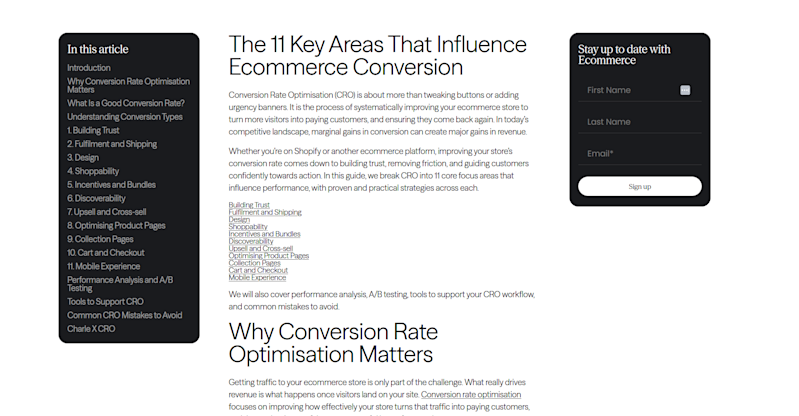
This would then help you seem like an authority as you're writing about what you've learned and how it relates to the customer.
So how do you keep on top of things?
Well, the best way to keep learning is to stay curious:
Stay on top of industry news
Read changelogs
Reverse-engineer sites that do the things you want to do, such as fast loading or new design types
You don’t need to reinvent your services every six months. Just refine and improve on what you already do. The deeper your technical skill gets, the more valuable your niche becomes and the more clients trust you to lead, not just deliver.
Time to put this into action!
Don’t worry if you’re missing some or all of these tips because freelancing isn’t something you figure out overnight. Honestly, if I seem smart from these, it’s only because I made the mistakes and figured them out the hard way!
The good news is, you don’t need to make the same mistakes as I did. You just need to start taking action on these tips now so that you can see the impact.
So take one thing from this guide and put it into practice today. Send a message to an old client, tighten your niche, or build your first system. Momentum is what builds successful freelancers.
Do that, stay consistent, and the rest will follow!
P.S.
And remember, if you want help to fast-track your freelance tech career, then check out our courses on the topic below:
Both are available as a ZTM member, as well as every other course in our library.
Plus once you join, you'll have access to our private Discord community. Here you can ask questions from our freelancing instructor, other students, as well as other working tech professionals and freelancers!

